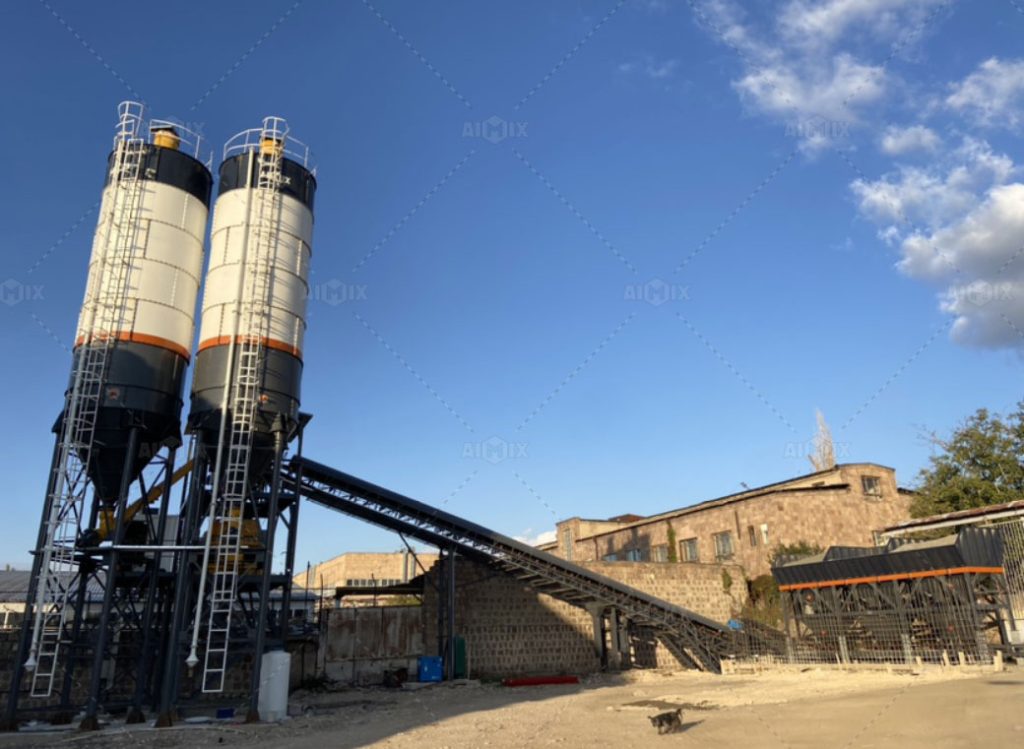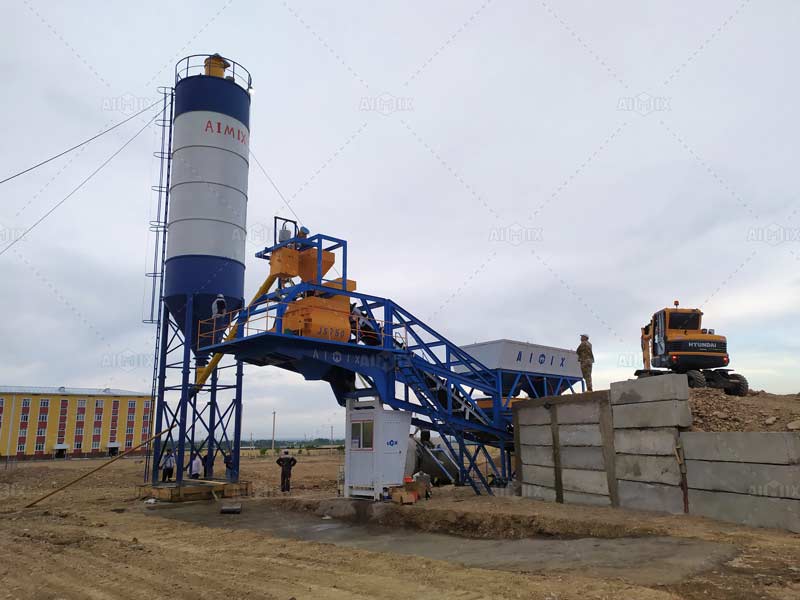Building a profitable concrete plant requires careful planning, investment in the right equipment, and strategic management of resources. With the growing demand for high-quality concrete in the construction industry, a well-run concrete plant can become a lucrative business. In this article, we will explore key steps and considerations for building a concrete plant that is both efficient and profitable, whether you are considering a mobile concrete plant, a concrete mixer plant, or even a mini concrete plant.
1. Research the Market and Demand
Before starting your concrete plant, it is essential to conduct thorough market research. Understanding the demand for concrete in your target area will help you determine the type of plant you need and its production capacity. And its production capacity is the key factor affecting the price of concrete plant(planta de hormigón precio). Whether you plan to cater to residential, commercial, or infrastructure projects, identifying the specific needs of your customers will give you a competitive edge.
Assess Local Construction Needs
Study the types of construction projects that are common in your area. Large infrastructure projects, residential developments, and commercial buildings all have different requirements for concrete, and understanding these needs will help you tailor your plant’s production capacity. Knowing the market demand will also help you estimate the volume of concrete required on a regular basis, allowing you to plan production accordingly.
Analyze Competitors
Evaluate other concrete suppliers in your region to identify gaps in the market. Are there underserved areas where demand for concrete is high? Are there competitors with high prices or inconsistent quality? By analyzing the competition, you can find opportunities to position your concrete plant as a reliable, cost-effective solution for local construction companies.

2. Choose the Right Concrete Plant Type
Once you have a clear understanding of the market demand, it’s time to select the right type of concrete plant. The plant type you choose will depend on your business model, target market, and available space. Here are some options to consider:
Mobile Concrete Plant
A mobile concrete plant is a great choice if you plan to work on multiple construction sites or want flexibility in production. These plants are easy to transport and set up, making them ideal for projects that require concrete on demand at different locations. The mobile concrete plant(planta de hormigon movil) is cost-effective because it reduces the need for large-scale infrastructure and offers the advantage of scalability, as you can adjust the production capacity based on specific project requirements.
Concrete Mixer Plant
If your goal is to produce high-quality concrete in larger volumes, a concrete mixer plant is an excellent option. These plants are designed for continuous, efficient production of ready-mix concrete. Concrete mixer plants are often equipped with advanced control systems to ensure precise mixing ratios and consistent quality, which can enhance your reputation and attract more customers.
Mini Concrete Plant
For smaller-scale operations or areas with limited space, a mini concrete plant offers a compact and cost-effective solution. These plants are perfect for small construction projects, residential developments, and urban areas. Although they have lower production capacities than larger plants, mini concrete plants are more affordable to set up and maintain, which can help you keep your initial investment low while still entering the market.
3. Focus on Quality and Efficiency
To build a profitable concrete plant, quality and efficiency should be top priorities. In the concrete business, maintaining consistent product quality is crucial to ensuring customer satisfaction and repeat business.
Invest in High-Quality Equipment
The quality of the equipment you choose directly affects the quality of the concrete you produce. Invest in reliable machinery, such as a high-performance concrete mixer, efficient batching equipment, and robust storage systems. Make sure your concrete plant(planta hormigonera) meets industry standards for production capacity and safety. High-quality equipment will not only improve production efficiency but also minimize downtime and maintenance costs.
Optimize Production Processes
Efficiency is key to profitability. Streamline the production process by automating as much as possible. Modern concrete plants often use automated batching systems and real-time monitoring tools to improve accuracy and reduce human error. Additionally, consider adopting lean manufacturing principles to minimize waste, optimize material usage, and improve turnaround times.
Regular Maintenance and Upgrades
To ensure your plant remains productive and efficient, establish a routine maintenance schedule. Regularly inspect machinery and replace worn-out parts before they cause significant disruptions to your operations. Additionally, consider upgrading equipment and control systems over time to stay competitive and keep up with technological advancements in the industry.
4. Minimize Operational Costs
Controlling costs is essential for profitability. Running a concrete plant involves several operational expenses, including raw materials, labor, energy, and transportation. By minimizing these costs, you can boost your bottom line.
Negotiate with Suppliers
Establish relationships with reliable suppliers of raw materials such as cement, sand, and aggregates. Negotiating favorable prices and bulk discounts can help you reduce material costs and improve your profit margins. Additionally, consider sourcing materials locally to reduce transportation costs and ensure quicker delivery times.
Optimize Energy Consumption
Energy costs can quickly add up when running a concrete plant. To minimize energy consumption, invest in energy-efficient equipment, such as high-efficiency mixers and batching systems. Additionally, consider renewable energy sources, such as solar panels, to further reduce energy costs in the long run.
Minimize Waste
Concrete production often results in waste due to excess materials or faulty mixes. Implementing systems to track material usage and reduce waste can help lower production costs. Efficient inventory management and better planning can ensure that materials are used effectively without overproduction.

5. Marketing and Customer Relationship Management
To build a profitable concrete plant, whether it is mobile, stationary, large or small concrete plant(mini planta de concreto), you must also focus on attracting customers and maintaining strong relationships with them.
Build a Strong Brand
Invest in building a strong brand reputation for quality and reliability. Customers are more likely to choose a concrete plant that is known for delivering consistent, high-quality products. Provide excellent customer service, ensure timely deliveries, and offer customized solutions to meet specific project needs. Word-of-mouth referrals can be a powerful marketing tool in this industry.
Develop an Online Presence
In today’s digital age, having an online presence is crucial. Create a professional website showcasing your concrete plant services, prices, and capabilities. You can also use social media platforms to engage with potential customers and share case studies of your successful projects. A strong online presence can help attract new clients and improve visibility in the market.
Conclusion
Building a profitable concrete plant requires careful planning, investment in the right equipment, and a focus on efficiency and customer satisfaction. By choosing the right type of concrete plant, optimizing production processes, minimizing operational costs, and focusing on customer relationships, you can set yourself up for long-term success. Whether you choose a mobile concrete plant, a concrete mixer plant, or a mini concrete plant, ensuring quality, efficiency, and smart marketing will help you maximize profits and thrive in the competitive concrete industry.